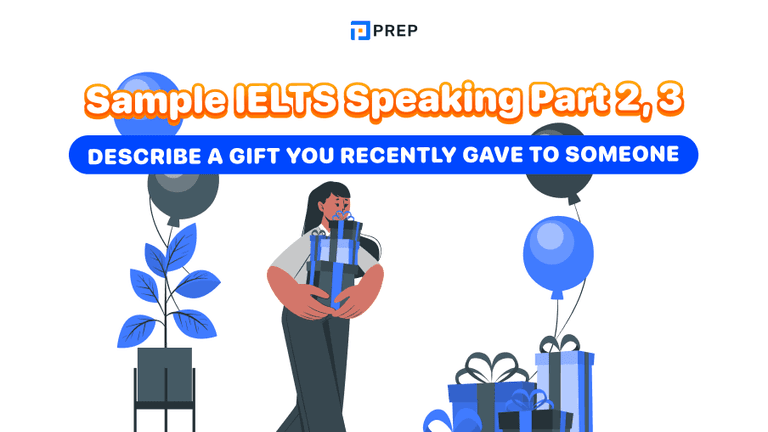Destination B1 – Book Review and Learning Tips
Destination B1 is a trusted grammar and vocabulary book designed for intermediate English learners. In this guide, we'll take a closer look at its structure, unit breakdown, key features, and how to use it effectively—especially for exam prep like PET or IELTS (Band 4.0–5.0).

I. Overview of the Destination B1 Book
Destination B1 is a widely used grammar and vocabulary book designed for learners aiming to reach the B1 level of the CEFR (Common European Framework of Reference for Languages). The book provides a highly focused approach to mastering essential grammar structures and topic-based vocabulary required for everyday communication, academic use, and standardized exams like PET or IELTS (Band 4.0–5.0).
Core information:
|
Unlike general English books, Destination B1 concentrates exclusively on developing two core aspects: accurate grammar usage and topic-based word building, both of which are essential at the intermediate level. Structured logically and progressively, the book allows learners to strengthen language skills step by step, making it suitable for both classroom use and independent study.
-
Learners who want to expand further can explore 4000 Essential English Words.
1. Structure and Unit Breakdown of Destination B1
Destination B1 is structured to guide learners systematically through intermediate-level grammar and vocabulary. The book is divided into 42 carefully organized units, combining topic-focused vocabulary and grammar in a format that is both easy to follow and effective for building language competence.

Grammar Sections
The grammar portion of the book is arranged in a logical, progressive sequence, beginning with foundational topics and gradually introducing more complex structures.
- Units 1–5: Focus on verb tenses, such as the Present Simple, Present Continuous, Past Simple, and Present Perfect.
- Units 6–10: Cover essential functional grammar topics like modal verbs, articles, and prepositions.
- Units 11–20: Introduce higher-level concepts such as the passive voice, conditionals, reported speech, and question forms.
Each grammar unit includes:
- Clear explanations with easily digestible rules
- Model sentences that reflect real-world usage
- Practice exercises that reinforce the form and meaning of each structure
Vocabulary Sections
The vocabulary units are built around practical, exam-relevant topics, helping students develop lexical range in the areas most commonly found in language tests and communication.
Key topics include:
- Education
- Environment
- Food and culture
- Media and communication
- Transport and travel
Vocabulary activities feature a variety of task types to promote retention and contextual understanding:
- Matching definitions
- Gap-fill exercises
- Word formation tasks (prefixes, suffixes, parts of speech)
- Collocation practice
The book also encourages the use of word families and context-based learning, training learners to internalize vocabulary through real usage rather than rote memorization.
Unit Design and Key Features
Each unit is split into two main components: Grammar (2 pages) and Vocabulary (2 pages), offering a balanced approach within a single lesson cycle.
Additional features include:
- Review Units: Every five units, learners complete a review lesson that consolidates previous grammar and vocabulary points.
- Answer Key: An included reference for all exercises, supporting independent learners.
- Audio Tracks: Accompanying recordings (available in selected editions) allow learners to practice pronunciation and listening comprehension related to the vocabulary section.
This structure makes Destination B1 an ideal self-study companion as well as a classroom resource, offering flexibility, clarity, and comprehensive coverage for learners working toward the B1 English proficiency level.
-
For more practical word sets at this level, check B1 English vocabulary.
2. Pros and Cons of Destination B1
Like many specialized English learning resources, Destination B1 offers several strengths that make it a popular choice among students and teachers. At the same time, understanding its limitations will help learners set realistic expectations and use the book more effectively.

Pros
- Focused on CEFR B1 level: The book is tailored specifically to the grammar and vocabulary requirements of intermediate-level learners, making it ideal for PET or pre-IELTS preparation.
- Clear structure and progression: Units are logically organized from basic to more complex topics, allowing learners to build skills step by step.
- Dual emphasis on grammar and vocabulary: The combination of grammar and thematic vocabulary provides a balanced foundation for all four language skills, especially reading and writing.
- Self-study friendly: Includes an answer key, making it suitable for independent learners. The format allows learners to check their progress after each unit.
- Effective for exam preparation: The practice exercises mirror tasks often found in standardized English exams, such as multiple choice, sentence transformation, and word formation.
- Review units for consolidation: Every five units include a review section, helping students revise and assess their understanding regularly.
Cons
- Lack of skills-based practice: The book does not directly develop listening or speaking skills. Learners will need to supplement their study with additional materials if preparing for IELTS or other integrated-skills exams.
- Audio files not consistently provided: Some editions do not include audio ecordings, which can limit pronunciation or listening development.
- Few real-life communication tasks: Exercises are mostly focused on form and accuracy rather than fluency or task-based interaction, so speaking practice is limited.
- Dense layout for some learners: The combination of grammar and vocabulary per unit, though efficient, may feel intense for students who prefer a slower pace.
Who Should Use Destination B1?
- Learners at the B1 level aiming to strengthen grammar and vocabulary
- Students preparing for exams such as Cambridge PET, IELTS (Band 4.0–5.0), or VSTEP
- Self-learners who want structure and clarity in their study routine
- Teachers looking for flexible, exam-oriented classroom materials
For best results, it’s recommended to pair Destination B1 with resources that focus on the productive skills of listening and speaking, depending on the learner’s goals.
II. How to Study Destination B1 Effectively
To get the most out of Destination B1, it’s essential to follow a structured and realistic study plan. Since the book includes both grammar and vocabulary sections, learners should balance their time between understanding rules and applying new words in context.
Suggested Study Schedule and Pacing
- Aim to complete 3–5 units per week, depending on your level and available time.
For example:- Monday–Tuesday: Grammar section (Units 1–2)
- Wednesday–Thursday: Vocabulary section (Units 1–2)
- Friday: Review previous units, note weak areas
- Use the integrated Review Units after every 5 lessons to revisit challenging topics and track your progress.
- Complete the practice exercises without referring to the key first, then check and correct to reinforce memory.
- Spread learning across multiple short sessions (20–30 minutes a day) rather than long, infrequent sessions.
Tips for Independent Learners
- Create a grammar/vocabulary journal: Summarize key rules or tricky structures in your own words, and collect new vocabulary with example sentences.
- Practice active recall: Cover the page, try to remember the rule or the word, then check your answer. This technique improves your long-term memory.
- Repeat difficult exercises after a few days: Don't leave a topic once it’s "done"—spaced repetition boosts retention.
- Speak or write using target language: Use the vocabulary from each unit to write short texts or answer exam-style questions. Use the grammar points in your writing or try using them while speaking about real situations.
- Use digital tools: Combine the book with apps like Quizlet for vocabulary review or Grammarly/ChatGPT for sentence checking and feedback.
- Set realistic goals: Try setting weekly “can-do” goals such as:
- “I can use the Past Perfect to talk about past events.”
- “I can write five sentences about education with new collocations.”
- If available, listen to the audio recordings while looking at the vocabulary pages and shadow the pronunciation. Even though Destination B1 isn’t focused on speaking/listening, this helps reinforce fluency.
Studying Destination B1 regularly—not just passively reading but actively working with the material—will help you reach a solid B1 level in both grammar and vocabulary. This foundation is critical if you plan to move on to more advanced English use or official exams.

-
Learners can also revisit 1000 most common English words to strengthen core vocabulary.
III. Can Destination B1 Help You Pass the PET or IELTS?
Destination B1 is designed specifically for learners at the B1 level of the CEFR, making it an excellent choice for building foundational knowledge in preparation for standardized English exams. However, it is important to understand what the book does—and does not—cover when it comes to specific tests like the Cambridge PET or IELTS.
Relevance to PET (Preliminary English Test)
The Cambridge PET (Preliminary English Test), now known as B1 Preliminary, focuses on all four language skills: Listening, Reading, Writing, and Speaking, as well as the underlying grammar and vocabulary that support them.
How Destination B1 supports PET preparation:
- The book aligns closely with the grammar and vocabulary scope of the PET exam.
- Key topics such as verb tenses, modal verbs, comparatives, conditionals, and reported speech appear frequently in the PET syllabus and are all fully covered.
- Vocabulary sections reflect common themes in the PET test: travel, shopping, daily routines, environment, education, etc.
- The book helps learners improve accuracy and form, both essential for success in productive (speaking and writing) tasks.
Limitations for PET:
- The book does not include full PET-style practice tests. Learners should pair it with official PET exam materials or practice papers.
- No listening or speaking sections are included. You’ll need additional resources for skill-building in those areas.
Support for IELTS (Band 4.0–5.0 learners)
Although Destination B1 is not tailored for IELTS, you can strengthen topic-specific vocabulary using IELTS Vocabulary Booster.
How it helps IELTS learners:
- Improves grammatical range and accuracy, essential for Writing Task 1 and Speaking
- Covers vocabulary themes that are commonly tested in IELTS Writing and Speaking Part 1 (e.g., education, media, the environment)
- Encourages structured thinking through topic-based practice, helping students express ideas more clearly
Limitations for IELTS:
- Does not teach IELTS-specific strategies such as writing task structures, time management, band descriptors, or listening question types
- Lacks IELTS-style exercises; learners should complement it with an IELTS-focused coursebook or practice set
IV. Where to Buy Destination B1 (Book + Key)
If you're planning to start using Destination B1 in your study routine, it's important to choose the right edition—and the right place to buy it. The most recommended version for self-study is the "With Key" edition, which includes full answer keys to help learners check their progress independently.’
Destination B1 is available in both paperback and digital formats, depending on your preference and location. Below are some reliable platforms where you can purchase the book:
- Amazon: Available across multiple country-specific sites. Make sure to choose a seller with high ratings and verify the edition (With Key).
- Book Depository: Offers competitive prices and free worldwide shipping. Ideal for learners outside major cities or English-speaking countries.
- Macmillan Education ELT Distributors: As the official publisher, Macmillan provides regional distributor information. You can check macmillanenglish.com to find an authorized reseller or ask your local bookstore to order it.
- Official bookstores and e-learning platforms: Some language centers, IELTS prep platforms, or school bookstores carry this title for enrolled students—especially in programs aligned with CEFR.
Warning About Unauthorized or Incomplete Copies
While some sites may offer free PDF downloads of Destination B1, learners should be cautious:
- Many pirated copies are incomplete, missing pages, answer keys, or exercises.
- Errors in formatting or content can negatively affect your learning.
- Unauthorized downloads violate copyright law and may include harmful files.
For the best experience and to support quality educational publishing, always purchase a legitimate and up-to-date edition from a trusted source.
Hopefully, this review of Destination B1 has helped you understand the structure and content of this book so that you can consider adding it to your study materials. If you would like PREP to review any other book, please don't hesitate to leave a comment! PREP will respond as soon as possible!

Hi I'm Chloe, and I am currently serving as an Product Content Administrator at Prep Education. With over five years of experience in independent online IELTS study and exam preparation, I am confident in my ability to support learners in achieving their highest possible scores.
Comment
Premium content
View allPersonalized roadmap
Most read












